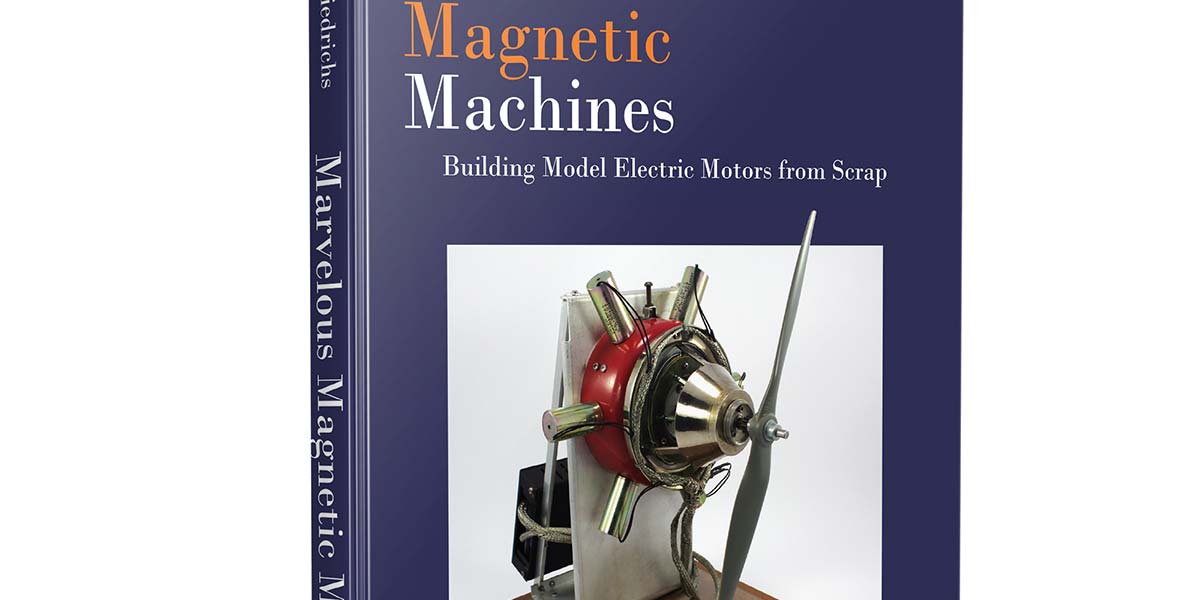Motors combine the almost magical property of magnetism with electricity to move the world around us. Many of us like to make things and use motors in our designs. Mr. H. P. Friedrichs has written a delightful book on how to make five motors that are works of art, and how to do so with scrap materials. They aren’t necessarily motors that you would use to power something (although they could do this), but are machines of artistic, intricate, and interesting construction that are designed to be a delight to watch.
To make these clever creations, we need to understand how motors work. With a clear explanation of how electricity and magnetism work together to create the forces that move things, Mr. Friedrichs shows us what is behind the function of these motors that are clearly not from your mother’s sewing machine. He tells us, “Build a homemade motor that works and you’ve demonstrated a certain mastery of a force that, because of its utility, is largely responsible for our present quality of life.”
In the construction of these motors, a number of parts are needed. Instead of giving us a parts list and a recipe to put them together, we are given the knowledge of how to make the parts that are needed, or how to adapt parts that we can obtain from discarded everyday mechanical and electrical devices. I find this information valuable and helpful to the creation of my own things.
A motor made using this book will probably not look just like the pictures, but will reflect the things you learn and the available parts that you adapt from other things. The designs remind me of Thomas Edison’s inventions displayed in his reconstructed laboratory in Greenfield Village in Dearborn, MI. The parts have a purpose, but are neatly constructed and arranged to make the mechanism pleasing to look at as well as functional.
We start by learning about the Peewee Motor, a clever little thing that uses a solenoid to drive a flywheel with a mechanical crankshaft linkage. A solenoid is taken from an old copier. A bearing, capstan, and flywheel come from an old tape recorder. Places to get these and other parts tell us how many great parts are available if we just know where to look. An old trivet or plaque makes for a handsome display base.
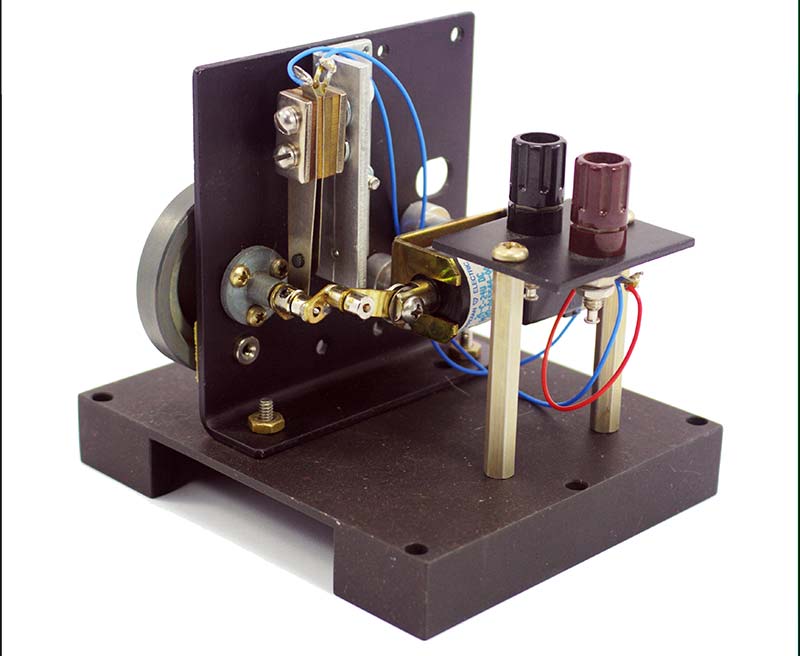
The Peewee motor, rear.
On the way during the construction of this motor, we must make provisions for timing of the solenoid’s activation. Plentiful photographs and 3D drawings make it easy to visualize the construction.
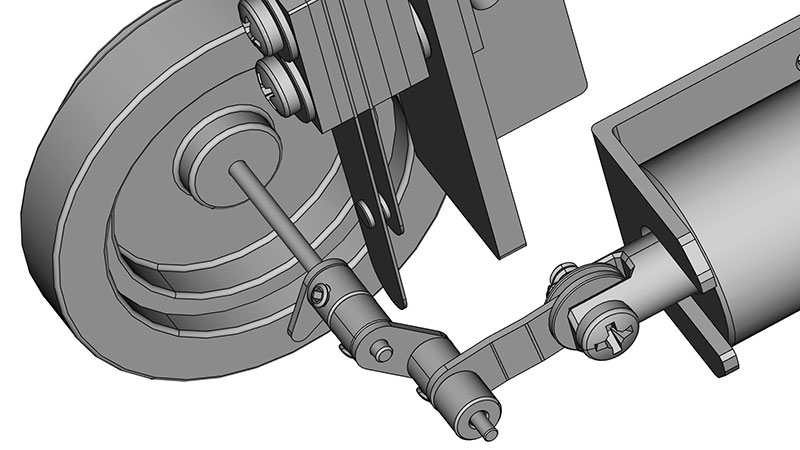
A view of the crank, cam, and reed switch. For clockwise rotation, the cam leads the crank by roughly 90 degrees.
Later, Mr. Friedrichs expands on that with the Christmas Motor with six solenoids and more advanced needs in timing and mechanical operation. Where do the parts come from? Mr. Friedrichs describes 17 different sources where ball bearings can be obtained. Take a threaded bushing from an old potentiometer, a support from an old candle holder, an aluminum saucepan for a crankcase, and other parts from the many places that are described, and you can get most of the parts you need.
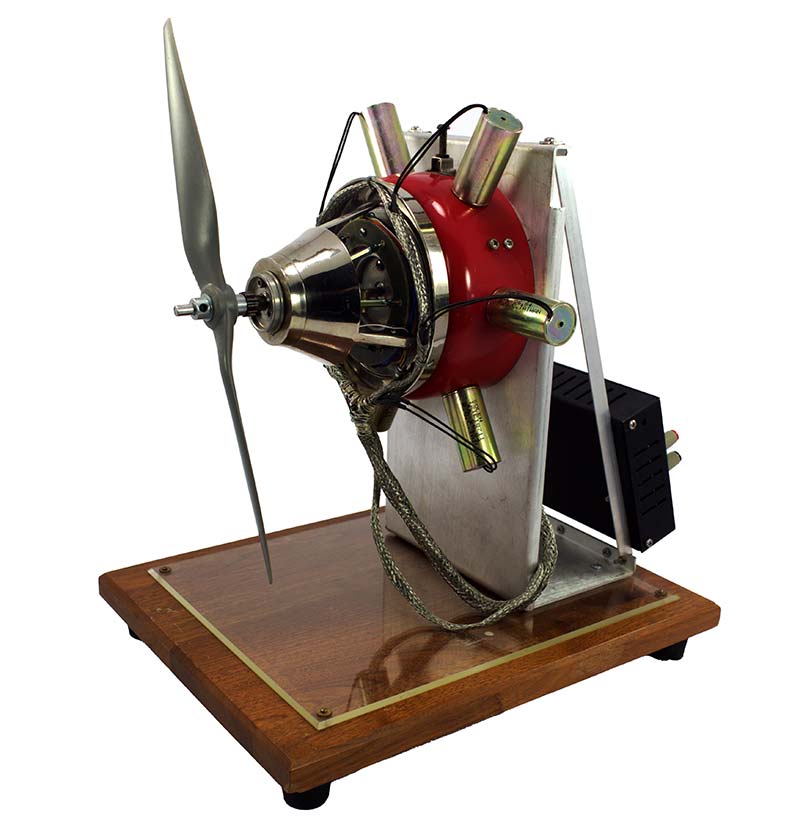
The Christmas motor, front.
Among my favorites is the “Little Twister” motor: a brushless motor that is based on the principles of the motors in our computer’s cooling fans. (So that’s how they work!) Parts from an old VCR, an old lamp for the base, and an old candle holder for the flywheel give the project some beautiful parts. Thorough instructions on how to accomplish “jeweling” or “engine turning” of the mounting plate faces gives a nice look to the metal. I know I will use this technique as it is quite pretty.
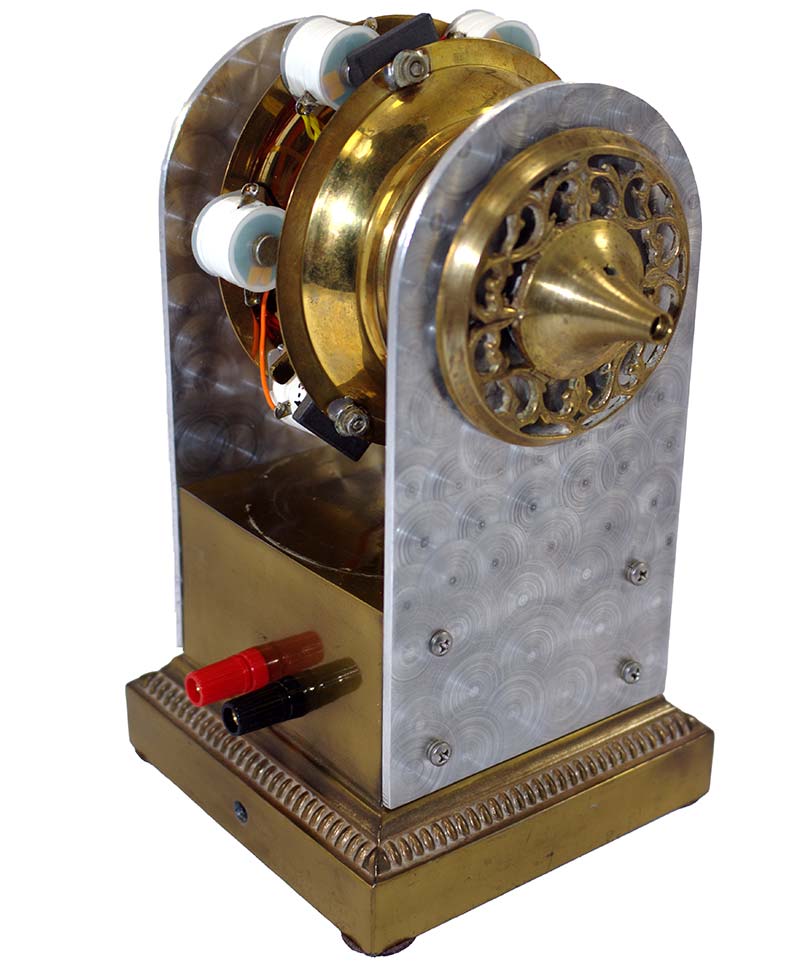
The Little Twister motor, front.
This motor has more complexity in the timing, so we learn about Hall-effect sensors and transistors to drive the coils. Although these parts are inexpensive to buy, we learn about sources where they can be salvaged. There is more electronics involved with this motor, and Mr. Friedrichs gives us the knowledge required to understand what is needed. Then, we also have the ability to apply these features to other creations that we might come up with after being inspired by this book.
Because much of this book contains the use of electricity and electronics, Mr. Friedrichs finishes with some good information on the use of electronics. He includes information on power supplies, multimeters, and other test instruments. He also has a section on motor balancing. These educational parts round out the book to be an education in electronics and mechanics that hobbyists who are designing and building things at home will find to be a valuable resource to help them in their endeavors. SV

